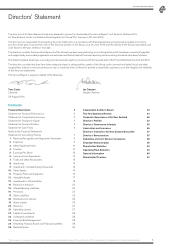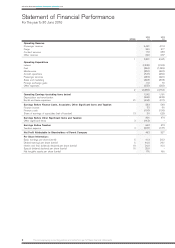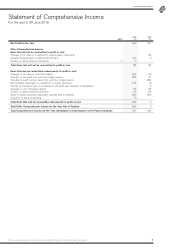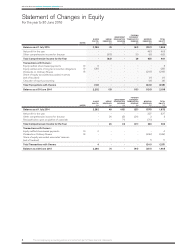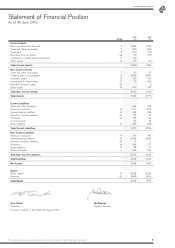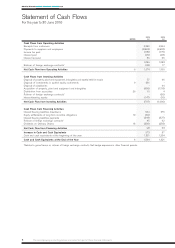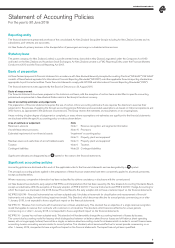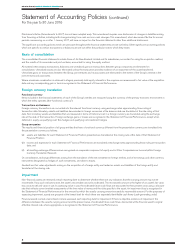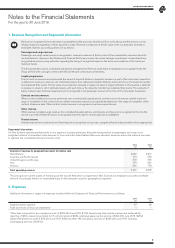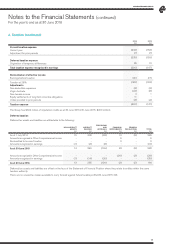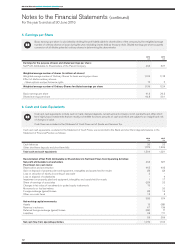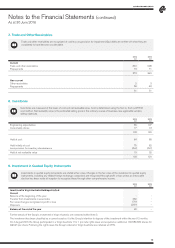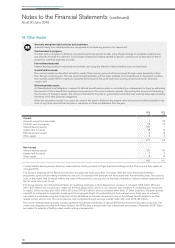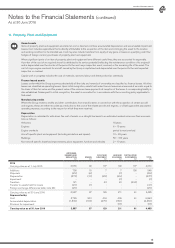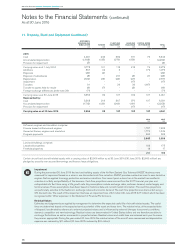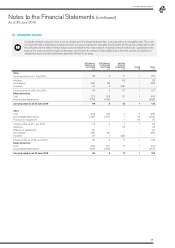Air New Zealand 2016 Annual Report Download - page 10
Download and view the complete annual report
Please find page 10 of the 2016 Air New Zealand annual report below. You can navigate through the pages in the report by either clicking on the pages listed below, or by using the keyword search tool below to find specific information within the annual report.
AIR NEW ZEAL AND ANNUAL FINANCIAL RESULTS 2016
Statement of Accounting Policies (continued)
For the year to 30 June 2016
8
AIR NEW ZEAL AND ANNUAL FINANCIAL RESULTS 2016
Disclosure Initiative (Amendments to IAS 7) has not been adopted early. This amendment requires new disclosures of changes in liabilities arising
from financing activities, including both changes arising from cash and non-cash changes. This amendment, which becomes effective for annual
periods commencing on or after 1 January 2017, will have no impact on the financial statements other than additional disclosures.
The significant accounting policies which are pervasive throughout the financial statements are set out below. Other significant accounting policies
which are specific to certain transactions or balances are set out within the particular note to which they relate.
Basis of consolidation
The consolidated financial statements include those of Air New Zealand Limited and its subsidiaries, accounted for using the acquisition method,
and the results of its associates and joint ventures, accounted for using the equity method.
All material intercompany transactions, balances and unrealised gains on transactions between group companies are eliminated on
consolidation. Unrealised losses are also eliminated unless the transaction provides evidence of an impairment of the asset transferred.
Unrealised gains on transactions between the Group, joint ventures and its associates are eliminated to the extent of the Group’s interest in the
joint ventures and associates.
Where a business combination is achieved in stages, previously held equity interests in the acquiree are remeasured to fair value at the acquisition
date and any corresponding gain or loss is recognised in the Statement of Financial Performance.
Foreign currency translation
Functional currency
Items included in the financial statements of each of the Group’s entities are measured using the currency of the primary economic environment in
which the entity operates (the “functional currency”).
Transactions and balances
Foreign currency transactions are converted into the relevant functional currency using exchange rates approximating those ruling at
transaction date. Monetary assets and liabilities denominated in foreign currencies at the balance date are translated at the rate ruling at that
date. Non-monetary assets and liabilities that are measured in terms of historical cost in a foreign currency are translated using the exchange
rate at the date of the transaction. Foreign exchange gains or losses are recognised in the Statement of Financial Performance, except when
deferred in equity as qualifying cash flow hedges and qualifying net investment hedges.
Group companies
The results and financial position of all group entities that have a functional currency different from the presentation currency are translated into
the presentation currency as follows:
(a) assets and liabilities for each Statement of Financial Position presented are translated at the closing rate at the date of that Statement of
Financial Position;
(b) income and expenses for each Statement of Financial Performance are translated at exchange rates approximating those ruling at transaction
date; and
(c) all resulting exchange differences are recognised as a separate component of equity and in Other Comprehensive Income (within Foreign
Currency Translation Reserve).
On consolidation, exchange differences arising from the translation of the net investment in foreign entities, and of borrowings and other currency
instruments designated as hedges of such investments, are taken to equity.
Goodwill and fair value adjustments arising on the acquisition of a foreign entity are treated as assets and liabilities of the foreign entity and
translated at the closing rate.
Impairment
Non-financial assets are reviewed at each reporting date to determine whether there are any indicators that the carrying amount may not be
recoverable. If any such indicators exist, the asset’s recoverable amount is estimated. The recoverable amount is the higher of an asset’s fair value
less costs to sell and value in use. In assessing value in use, the estimated future cash flows are discounted to their present value using a discount
rate that reflects current market assessments of the time value of money and the risks specific to the asset. An impairment loss is recognised in
the Statement of Financial Performance for the amount by which the asset’s carrying amount exceeds its recoverable amount. For the purposes of
assessing impairment, assets are grouped at the lowest level for which there are separately identifiable cash flows (cash-generating units).
Financial assets carried at amortised cost are assessed each reporting date for impairment. If there is objective evidence of impairment, the
difference between the asset’s carrying amount and the present value of estimated future cash flows, discounted at the financial asset’s original
effective interest rate, where appropriate, is recognised in the Statement of Financial Performance.



